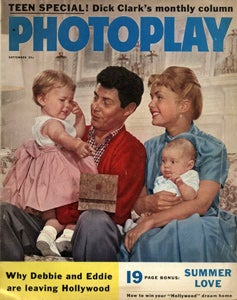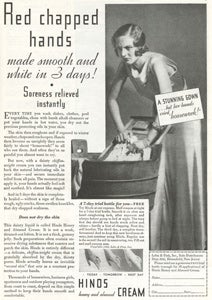It’s Not All About You
With her second child on the way, Britney Spears faces an impending divorce and an unfortunate lack-of-wardrobe incident. Former Seinfeld star Michael Richards’ racist rants at a comedy club are posted on YouTube. Mel Gibson is arrested on suspicion of driving under the influence and his alleged anti-Semitic remarks to the arresting officer surface when the unofficial arrest report is leaked online.
As these scandals swirled in 2006, USC College sociologist Karen Sternheimer watched celebrity news programs such as Entertainment Tonight and wondered if perhaps there wasn’t something more to the stories.
She initially looked at collections of old celebrity fan magazines to determine the historical origins of this fascination. It wasn’t long, she discovered, before stars’ personal lives started becoming the prime attraction for readers. Sternheimer thought her analysis had run its course, but she continued her investigation to see where the magazines might take her next.
What Sternheimer’s study ultimately led to was her latest book, Celebrity Culture and the American Dream: Stardom and Social Mobility, which was released from Routledge in January. (Watch a video of Sternheimer talking about her book here.)

Celebrity Culture and the American Dream: Stardom and Social Mobility, written by Karen Sternheimer, associate professor (teaching) of sociology, was released from Routledge in January 2011.
Sternheimer found the fan magazines to be unique time capsules that provide a fascinating sociological window into the changing meaning of success in America over the last 100 years. In the book, she explores the magazine’s stories and advertisements to reveal not only the links between celebrity culture, consumption and social mobility, but how and why the American Dream has persisted despite the country’s shifting attitudes toward class, gender, marriage and race.
“It’s not really about the celebrities, it’s about us,” said Sternheimer, associate professor (teaching) of sociology. “Of course by looking at the magazines, I can’t infer how people are going to interpret the content and how they’re going to make sense of it in the context of their lives. But it is important for us to consider how celebrity culture is packaged and sold through the years; how it’s changed; and how these changes coincide with economic, political and social shifts, too.”
Sternheimer based her analysis on a collection of approximately 600 fan magazines, many housed in the USC Cinematic Arts Library, including Photoplay (1911–1980) and Modern Screen (1930–1985), as well as People (1974–present).
“If I wasn’t in Los Angeles and at USC, I don’t think this book could have turned out the way it did,” she said. “Ned Comstock in the Cinematic Arts Library was amazingly helpful with not only providing access to the fan magazine collections, but also sharing his enthusiasm for the project.”

Family life was central to celebrity coverage during the ’50s as demonstrated in this cover of the September 1958 issue of Photoplay that featured Debbie Reynolds and Eddie Fisher with their children. Image courtesy of the USC Cinematic Arts Library.
With Comstock’s assistance, Sternheimer and 15 USC undergraduate student researchers spent four years meticulously searching through the publications for thematic patterns and changes in the both article and advertisement content. They met in groups weekly to discuss and compare their findings.
“They dedicated hours to reviewing magazines and picking out the same kinds of stories, the same kinds of ads,” Sternheimer said of the student researchers whose majors ranged from sociology to neuroscience to communication. “It helped them to understand cultural history in a way they wouldn’t have otherwise and I couldn’t have done it without them.”
Following a close examination of all the materials they gathered, Sternheimer identified the major shifts in the magazines’ construction of the American Dream from 1911 to the present and organized the chapters chronologically around each of these themes.
One of the shifts that surprised Sternheimer most was how Depression-era stories emphasized celebrity wealth and privilege in the face of devastating loss.
“[I]f your only source of American history was a movie fan magazine, you might think the Great Depression never happened,” Sternheimer writes in the book. “While this could have easily alienated many fans, celebrity culture was perhaps the main mechanism for keeping the American Dream alive during this time, amplifying the notion that becoming fabulously wealthy was possible even during the Depression.”

This image from the March 1933 issue of Photoplay illustrates how advertisements in celebrity fan magazines during the Depression era frequently included people dressed in evening wear, such as this woman doing the laundry. Image courtesy of the USC Cinematic Arts Library.
Even though many parents struggled to provide their children with the basic necessities, Sternheimer points out how Photoplay featured the custom bungalow built for child star Shirley Temple so she could play and eat her meals while on the set. Such stories of extravagance appeared alongside advertisements that also reinforced elements of glamour such as a 1933 Hinds hand cream ad that depicts a woman using a washboard and tub to clean clothes while wearing an evening gown with the note, “A stunning gown, but her hands cried ‘housework!’ ”
When the rare reference to the Depression did appear in fan magazines, it was usually connected with a celebrity’s decline from fame. However, the star’s own personal failures rather than the transition from silent movies to talkies and broader changes in the economy were blamed. Sternheimer notes amid today’s current financial crisis the content of fan magazines such as People continue to underline the same theme.
“Just as during the Great Depression, when fan magazines emphasized a former silent star’s personal failures, modern-day downfalls reinforce the idea that we succeed and fail based on our own merit, masking the systemic nature of social inequality,” Sternheimer writes.
Now that monthly fan magazines have been replaced with today’s nonstop stream of celebrity gossip available through a host of media, Sternheimer observes how quickly one can become entangled in the debates surrounding celebrities’ personal lives and choices.
“We get caught up in the details and sometimes take ourselves out of the equation,” she said. “We need to ask: Why do we focus on certain issues at certain times? It’s not an accident that particular debates are presented to us as part of celebrity culture.”

Fan magazine stories began including more scandals in the ’60s, frequently featuring Elizabeth Taylor and Richard Burton as in this image from the April 1964 issue of Photoplay. Image courtesy of the USC Cinematic Arts Library.
To help address the larger significance of such debates and at her publisher’s urging, Sternheimer has created a blog to accompany the book. She posts reflections twice weekly on current celebrity discussions such as Lady Gaga’s recent 60 Minutes interview and the declining viewership for the Academy Awards.
For Sternheimer, who contributes regularly to the blog Everyday Sociology and frequently provides commentary to media outlets such as CNN and The New York Times, sharing her research and expertise with a broader audience, is critical. Celebrity Culture and the American Dream, like her other scholarly books, is also written in an accessible, academic jargon-free style.
“I see it as part of my purpose as a professor and as a writer to encourage people to think more critically not just about themselves, but about our society in general,” she said. “I hope people will take a topic like celebrity, which I explore in my book, and use it as a starting point for thinking about topics such as American culture and history in a larger perspective.”
This spring, Sternheimer will talk about Celebrity Culture and the American Dream at the Los Angeles Times Festival of Books as part of a panel discussion with USC College’s Leo Braudy, Lois Banner and M.G. Lord. The event, the largest and most prestigious book festival in the country, is being held on USC’s University Park campus April 30 to May 1.
Read more articles from USC Dornsife Magazine’s Spring/Summer 2011 issue